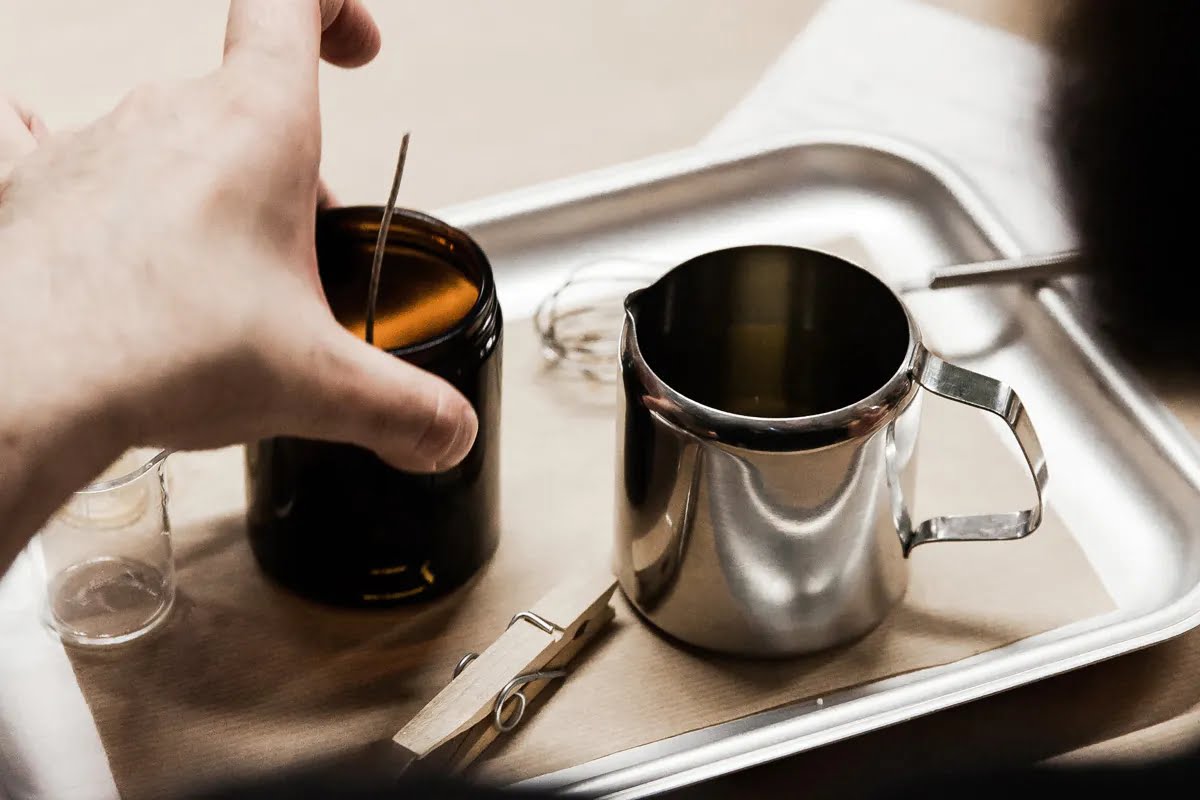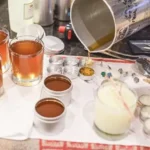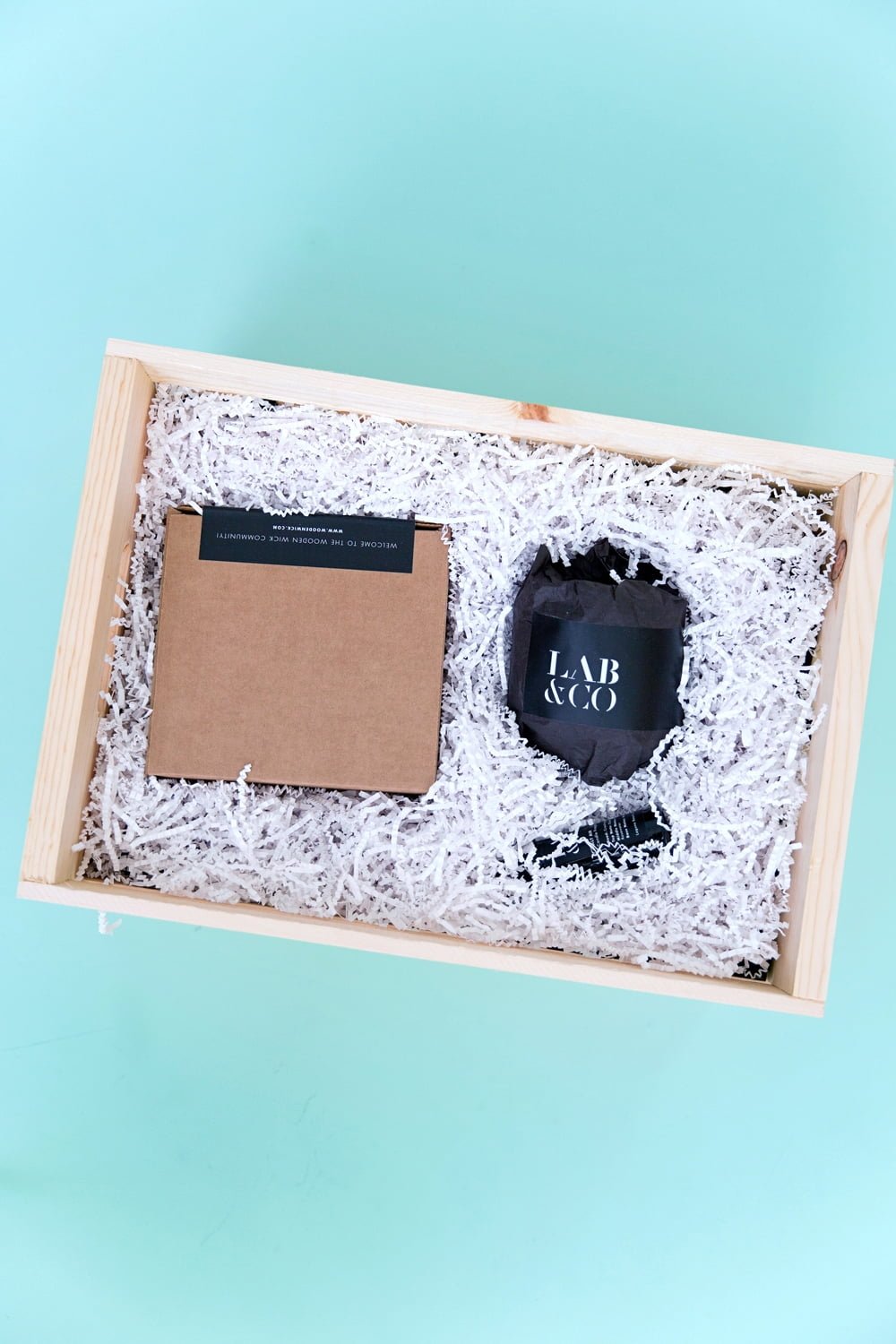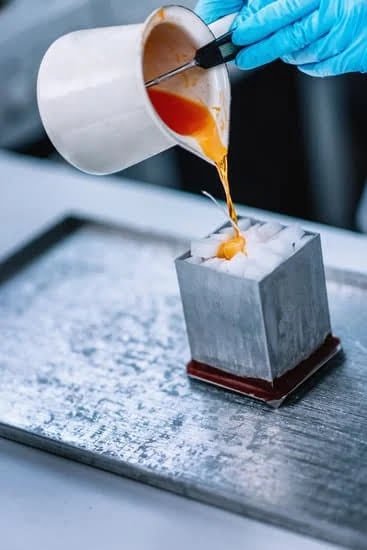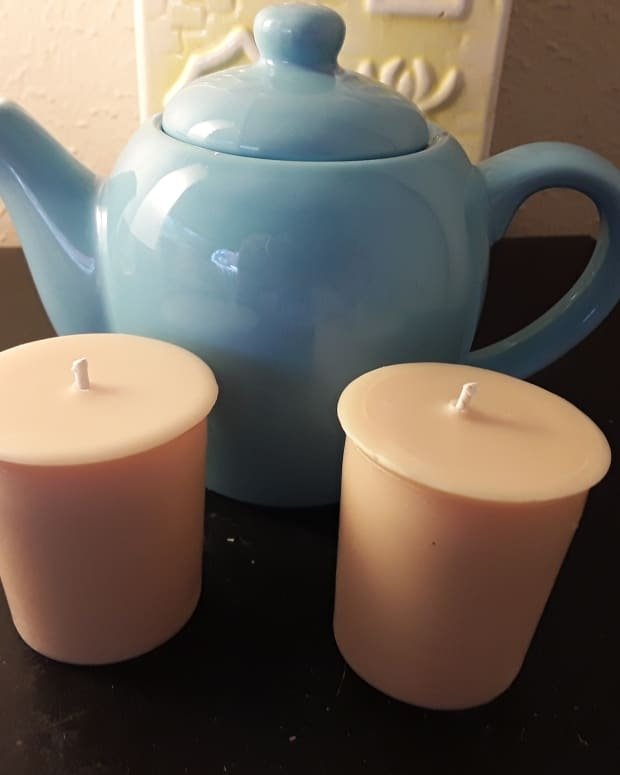In recent years, home candle making has seen a surge in popularity as people discover the joy and fulfillment that comes with crafting their own scented masterpieces. This captivating journey into the world of homemade candles offers not only a creative outlet but also a host of personal benefits. From setting a cozy atmosphere to expressing your unique style, the art of candle making has something to offer everyone.
There is a certain satisfaction that comes with creating something beautiful and functional with your own two hands. Home candle making allows you to tap into your creativity and experiment with different scents, colors, and designs. Whether you prefer the soothing ambiance of a lavender-scented candle or the invigorating aroma of citrus, crafting your own candles allows you to personalize each one to suit your preferences.
Not only does home candle making allow you to create customized scents, but it also offers practical advantages. By choosing high-quality ingredients and investing in the right tools and materials, you can ensure that your homemade candles burn evenly and last longer than store-bought alternatives. Not to mention, the cost savings associated with making your own candles can be considerable in the long run.
Join us on this captivating journey as we delve into the art and joy of home candle making. From exploring essential supplies and techniques to troubleshooting common issues, this guide will equip you with all the knowledge you need to create professional-quality candles right in the comfort of your own home. So gather your supplies, ignite your passion for creativity, and let’s dive into this delightful world of homemade scented wonders together.
Necessary Supplies
Comprehensive List of Must-Have Tools and Materials
Before embarking on your home candle-making journey, it’s important to gather all the necessary supplies to ensure a smooth and enjoyable crafting experience. Here is a comprehensive list of the essential tools and materials you will need:
- Wax: Choose a wax that suits your preferences and desired end result. Popular options include soy wax, beeswax, and paraffin wax.
- Wicks: Selecting the right wick is crucial for a well-burning candle. Consider factors such as size, material (cotton or wooden), and whether you want a pre-tabbed wick for convenience.
- Containers: Decide on the type of container you want to use for your candles, such as glass jars or tin cans. Make sure they are heat-resistant and suitable for holding hot wax.
- Thermometer: A thermometer is essential for monitoring the temperature of your wax throughout the melting and pouring process.
- Pouring Pitcher: A dedicated pouring pitcher with a spout makes it easier to pour melted wax into containers without making a mess.
- Fragrance Oils/Essential Oils: Choose high-quality oils to add delightful scents to your candles. Experiment with different fragrances to create unique combinations.
- Colorants: If you want colored candles, consider using dye chips or liquid candle dyes specifically formulated for candle-making.
- Heat Source: Depending on the method you choose, you may need a heat source like a double boiler or an electric melt pot.
Where to Easily Source High-Quality Ingredients
Finding reliable suppliers for your candle-making ingredients is crucial in ensuring both the quality and safety of your homemade candles. Here are some popular places where you can easily source high-quality supplies:
- Craft Stores: Local craft stores often carry a wide range of candle-making supplies, including waxes, wicks, fragrances, and dyes. Check if they offer online ordering or curbside pickup options.
- Online Retailers: Many online retailers specialize in candle-making supplies and offer an extensive selection of materials. Look for reputable websites that provide detailed product descriptions and customer reviews.
- Wholesale Suppliers: If you plan to make candles in large quantities or start a small business, consider purchasing your supplies from wholesale suppliers. This can help you save money and ensure a steady supply of ingredients.
- Small Businesses: Support local small businesses that create and sell handmade candles by purchasing their supplies. Some may even offer workshops or classes to learn more about the craft.
Tips for Choosing the Perfect Wax and Wicks for Your Candles
When it comes to choosing the right wax and wicks for your homemade candles, there are several factors to consider. Here are some tips to help you make informed decisions:
- Wax Considerations: Each type of wax has its own unique characteristics and benefits. Soy wax is popular for its natural origins, clean burn, and excellent scent throw. Beeswax offers a naturally sweet aroma and a longer burn time. Paraffin wax is known for its affordability and ability to hold fragrance well.
- Wick Selection: The size of the wick is crucial to ensure proper burning of your candles. Consider the diameter of your container when selecting a wick size – larger containers may require thicker wicks to prevent tunneling while smaller ones may need thinner ones for optimal burning.
- Testing is Key: It’s important to experiment with different combinations of wax types and wick sizes before settling on the perfect combination for your specific candle-making needs. Conducting burn tests can help determine if any adjustments are needed.
By gathering these necessary supplies and understanding how to choose the right wax and wicks, you’ll be well-prepared to dive into the enchanting world of candle crafting at home. Remember, each ingredient and tool plays a vital role in creating beautiful, fragrant masterpieces that bring joy and warmth to your space.
Candle Making Techniques
Pouring Techniques
One of the most common and versatile methods of making candles at home is pouring. This technique involves melting the wax and pouring it into a container or mold to set. To achieve professional-quality results, it’s important to choose the right type of wax for your desired candle. Soy wax is a popular choice for beginners due to its ease of use and natural properties. Beeswax is another option known for its long burn time and beautiful aroma.
When pouring your candles, it’s important to consider the temperature at which you add fragrance oils or essential oils. Adding these scents when the wax is too hot can cause them to evaporate too quickly, resulting in a weaker scent throw.
On the other hand, adding them when the wax is too cool can lead to clumping or uneven distribution of the fragrance. It’s recommended to add scents when the wax reaches a temperature between 180-185 degrees Fahrenheit.
Dipping Techniques
Dipping techniques are an excellent choice for those who prefer a more traditional approach to candle making. This method involves repeatedly dipping a wick into melted wax until the desired thickness is achieved. Each dip adds another layer of wax, resulting in sturdy and long-lasting candles.
The key to successful dipping is ensuring that each layer of wax fully sets before adding another one. This can be done by allowing each dip to cool and harden before submerging the wick again. The number of dips required will depend on personal preference and desired candle thickness.
Molding Techniques
Molding techniques offer endless possibilities for creativity in candle making. With this method, liquid wax is poured into pre-made molds that come in various shapes and sizes, such as pillar molds or novelty molds like animals or fruits.
To ensure easy release from the mold, it’s important to apply a release agent such as mold release spray or vegetable oil before pouring the wax. Once the wax has hardened, the candle can be gently removed by flexing the sides of the mold or using a releasing tool. Molding techniques allow for intricate details and unique designs, making it a favorite among experienced candle makers looking to push their creativity to new heights.
By exploring different candle making techniques such as pouring, dipping, and molding, hobbyists can uncover their personal preferences and discover the magic of creating their own custom candles at home. These techniques offer endless possibilities for creativity and allow individuals to craft candles that are not only beautiful but also reflect their unique style and personality.
Choosing Scents
The sense of smell is a powerful and evocative one, capable of bringing back memories and setting the mood in any space. When it comes to home candle making, selecting the right fragrance is essential for creating a captivating and enjoyable experience.
In this section, we will explore the importance of choosing scents that elevate your DIY candles and provide an overview of popular fragrances and their unique psychological effects. Additionally, we will offer resourceful tips for creating your own signature scent blends.
When it comes to selecting scents for your homemade candles, it’s important to consider the desired atmosphere or mood you want to create. Different fragrances can evoke various emotions and enhance specific environments.
For example, floral scents such as lavender or rose can promote relaxation and calmness, making them perfect choices for creating a soothing ambiance in bedrooms or meditation spaces. On the other hand, citrus or fruity scents like lemon or orange can uplift moods and bring a sense of freshness to living areas or workspaces.
| Scent | Psychological Effects |
|---|---|
| Vanilla | Calming and comforting |
| Sandalwood | Grounding and centering |
| Citrus (e.g., lemon, orange) | Energizing and uplifting |
| Patchouli | Mood enhancing and aphrodisiac |
While these scents have general effects, the reactions can vary from person to person. It’s important to consider personal preferences and any potential sensitivity to certain fragrances when creating your own candles or giving them as gifts.
For those looking to add a unique touch to their DIY candles, creating signature scent blends can be an exciting and fulfilling endeavor. Experiment with combining different essential oils or fragrance oils to create a custom aroma that reflects your personality or suits a specific occasion. Consider using a fragrance wheel – a tool used by perfumers – which categorizes scents into different families (e.g., floral, woody, spicy) and helps identify complementary aromas.
Safety First
When engaging in the art of home candle making, it is essential to prioritize safety and create a secure environment. By following crucial safety precautions throughout the candle-making process, you can reduce the risk of accidents and maintain a hazard-free space in your home.
First and foremost, it is important to handle hot wax with care. When working with melted wax, always use a double boiler or a heat-resistant container to prevent direct contact with flames and minimize the risk of fire. Additionally, ensure that your work area is clear of any flammable materials or sources of heat, such as open flames or hot appliances.
Another aspect of safety in candle making involves handling essential oils and fragrance additives. These substances are highly concentrated and should be used sparingly according to the recommended guidelines. It is crucial to read the product labels carefully and follow proper dilution techniques when incorporating scents into your candles. Always wear protective gloves and eyewear when handling these ingredients and keep them out of reach of children or pets.
Maintaining proper ventilation in your candle-making space is also important for safety. Since melting wax releases fumes that can be irritating or harmful when inhaled excessively, make sure you are working in a well-ventilated area. Opening windows or using exhaust fans can help dissipate the fumes effectively.
Additionally, it is crucial to have an understanding of fire safety measures. Keep a fire extinguisher nearby and know how to use it effectively. Familiarize yourself with fire emergency procedures so that you can respond quickly in case of any accidents.
By taking these safety precautions seriously, you can ensure a secure environment for your candle-making endeavors. Remember that prioritizing safety not only protects you but also allows you to enjoy the creative process without unnecessary risks or hazards.
Key points
– Handle hot wax with caution using a double boiler or heat-resistant container.
– Keep your work area free from flammable materials and heat sources.
– Dilute and handle essential oils and fragrance additives properly, wearing protective gear.
– Maintain proper ventilation to minimize fumes inhalation.
– Have a fire extinguisher nearby and know emergency procedures.
Troubleshooting Common Issues
Crafting homemade candles can be a fulfilling and rewarding activity, but like any craft, sometimes things don’t go exactly as planned. However, with a little troubleshooting and creativity, you can transform those candle-making mishaps into beautiful masterpieces. In this section, we will provide you with a troubleshooting guide for common problems that may arise during the candle-making process, along with practical solutions to salvage and improve imperfect candles.
1. Air Bubbles: One common issue in candle making is the presence of air bubbles in the finished product. These bubbles can spoil the appearance of your candle and create uneven burning. To avoid this problem, it’s important to ensure that your container is clean and free from dust or debris before pouring the wax.
Additionally, stirring the wax gently while it cools can help release any trapped air bubbles. If you still end up with air bubbles, don’t worry. You can try using a heat gun or hairdryer on low heat to carefully melt the surface of the candle and smooth out any imperfections.
2. Uneven Burning: Another frustration for candle makers is when their creations burn unevenly. This usually occurs when there are issues with wick placement or size.
To fix this problem, make sure to choose the appropriate wick size for your container based on its diameter. If you’re using multiple wicks in a larger container, ensure they are spaced evenly apart. If you’ve already made the candle and notice uneven burning, you can try trimming the longer wicks slightly shorter to achieve a more even burn.
3. Fragrance Inconsistencies: Sometimes, candles may have inconsistent fragrance distribution throughout their wax due to improper mixing or using poor-quality fragrance oils. To prevent this issue from occurring again in future creations, make sure to thoroughly stir your melted wax and fragrance oil together before pouring it into the container. Using high-quality fragrance oils can also make a significant difference in the scent throw of your candles.
By following these troubleshooting tips and tricks, you can overcome common candle-making issues and turn them into opportunities to improve your craft. Remember, practice makes perfect, and with each mishap, you’ll gain valuable experience to create even more beautiful and flawless candles in the future.
Candle Care and Storage
Once you have created your beautiful homemade candles, it is important to know how to properly care for and maintain them to ensure their longevity. By following some expert advice, you can extend the lifespan of your candles and continue to enjoy them for many hours of cozy ambiance. Additionally, taking proper care of your candles will help preserve their scent potency and appearance.
To care for your homemade candles, it is essential to trim the wick before each use. Trimming the wick to about 1/4 inch helps prevent soot buildup and ensures a clean burn. It also prevents the flame from becoming too large, reducing the risk of accidents. Using a wick trimmer or simply scissors specifically designated for candle trimming can make this process easier.
Another important aspect of candle care is ensuring that the candle burns evenly. This can be achieved by allowing it to burn long enough during each use to create a full melt pool across the top surface. A general rule of thumb is to burn a candle for at least one hour per inch in diameter. This allows the wax to melt completely and avoids tunneling, which can waste wax near the edges.
Proper storage conditions are crucial for maintaining the scent potency and appearance of your homemade candles. Candles should be stored in a cool, dry place away from direct sunlight and extreme temperature changes. Exposure to heat can cause melting or warping, while exposure to sunlight may fade colors or affect fragrance quality.
| Candle Care Tips | Storage Tips |
|---|---|
| – Trim wick before each use | – Store in a cool, dry place |
| – Allow a full melt pool during each burn | – Keep away from direct sunlight |
| – Avoid burning for extended periods of time | – Prevent exposure to extreme temperature changes |
By following these simple practices, you can ensure that your homemade candles remain beautiful, fragrant, and enjoyable for a long time. With proper care and storage, you can continue to indulge in the warm glow and captivating scents of your masterpieces.
Candle Making as an Art Form
Candle making is not just a hobby or a craft; it is an art form that allows you to unleash your creativity and showcase your personal style. In this final section of our article on home candle making, we explore how you can take your candle crafting to the next level and truly express yourself through innovative designs.
One of the joys of handmade candles is the ability to create unique and artistic pieces that reflect your individuality. Whether it’s experimenting with different colors, textures, or shapes, there are endless possibilities for customization. You can use natural and eco-friendly materials, such as soy wax or beeswax, to add an organic touch to your candles while also reducing environmental impact. Get inspired by the world around you – nature, art, fashion – and let your imagination run wild.
As you delve deeper into the world of candle making, don’t be afraid to push boundaries and try new techniques. Explore advanced pouring methods like layering or marbling to create visually stunning candles that are true works of art. Experiment with embedding objects in your candles or adding decorative elements like dried flowers or glitter for added flair. The key is to have fun and let your creativity flow.
Home candle making provides a wonderful opportunity for self-expression and relaxation. Allow yourself to immerse in the process without being overly concerned about perfection. Embrace imperfections as part of the artistic journey and learn from each creation. Remember, every candle you make tells a story – your story – so embrace the artistry in every step.
In conclusion, home candle making offers much more than just functional lighting; it allows you to tap into your inner artist and express yourself through beautiful handmade creations. Take advantage of this opportunity to explore different techniques, experiment with scents and designs that speak to you personally, and infuse every candle with love and creativity.
With time and practice, you will master the craft while creating one-of-a-kind pieces that bring joy and beauty into your home. So, let your creative spirit guide you as you embark on this captivating journey of self-expression through the art form of homemade candles.

Welcome to my candle making blog! In this blog, I will be sharing my tips and tricks for making candles. I will also be sharing some of my favorite recipes.

